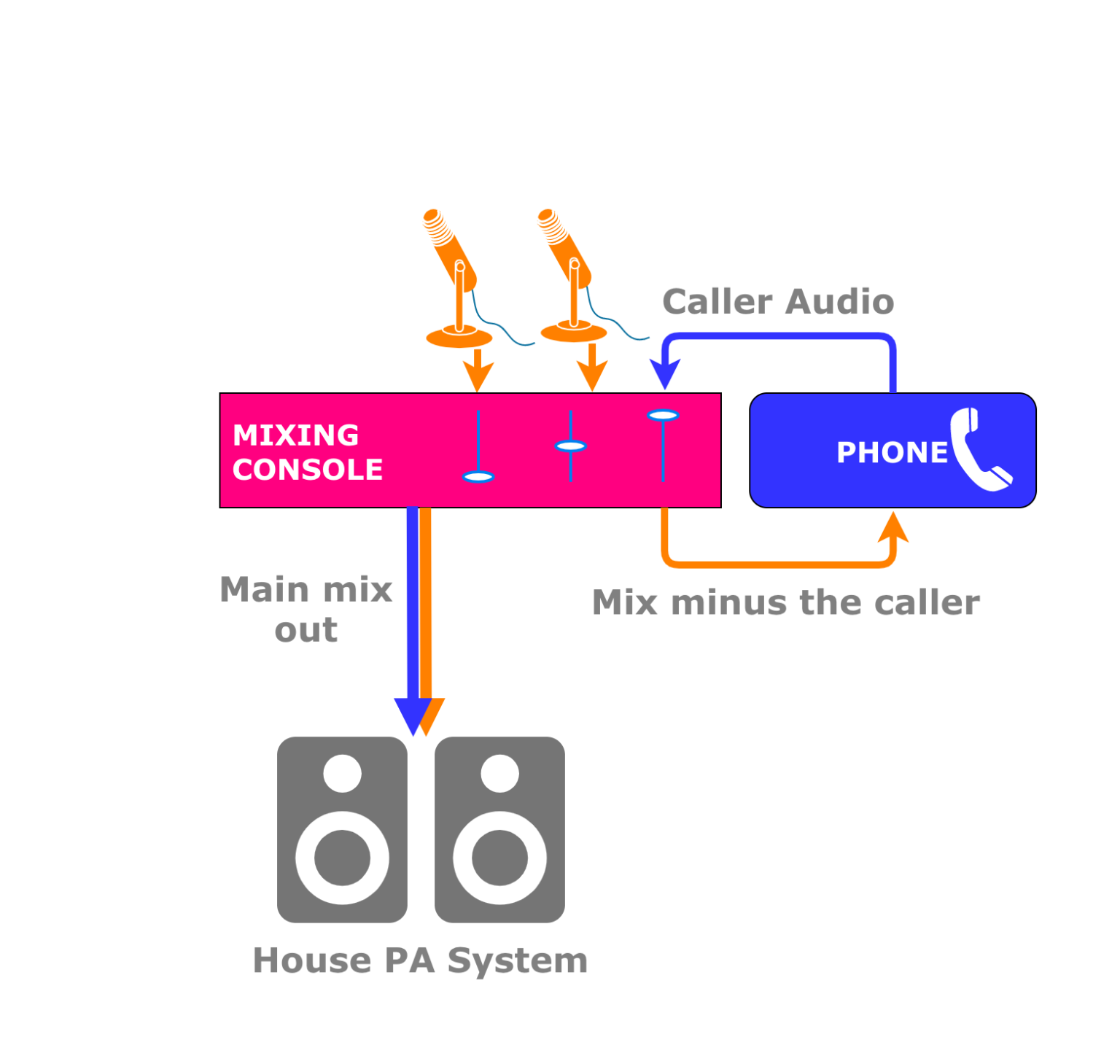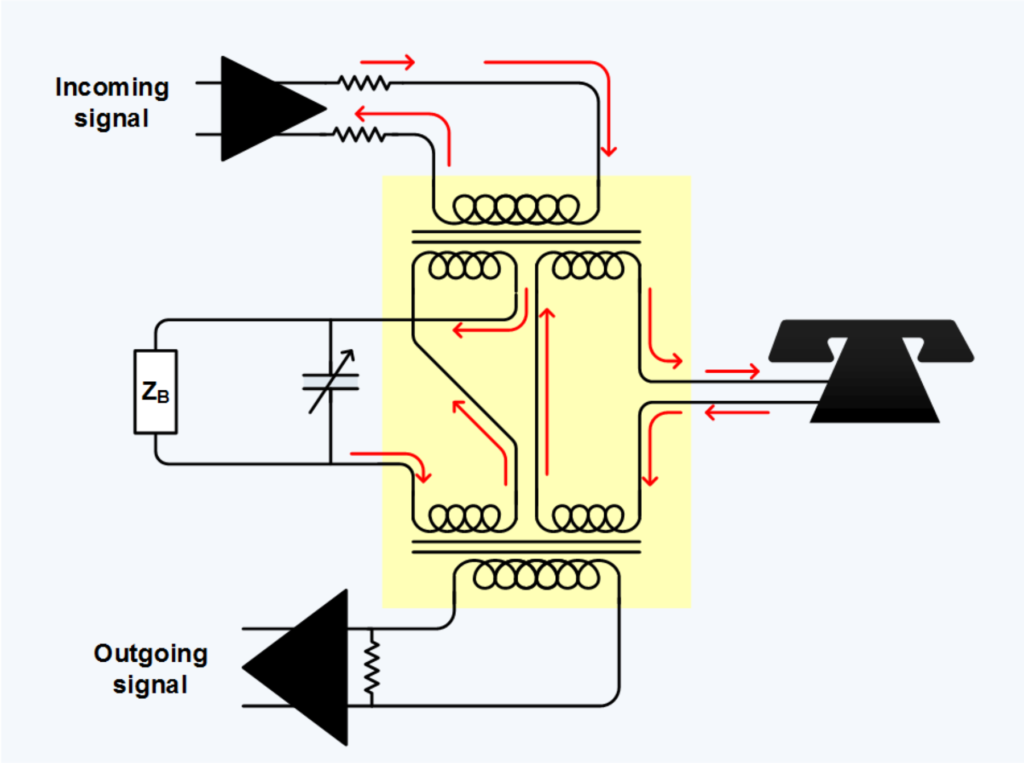News
7 Apr 2021
Tech Talk: The Mix Minus

Subscribe to CX E-News
Mix Minus is a simple technique for controlling sound loops in audio networks across multiple venues. As live event professionals, we never really had to be across it because it was really only an issue in broadcast.
But then we started streaming and doing multi-venue events, and things changed.
Here is a typical scenario: Two people are on stage at a conference talking on separate microphones into a house PA system. There is a third person participating in the conference over an old-school telephone. The conference is in front of a large audience, so the two microphones are mixed together and played over the PA system along with the phone participant. All three people are heard in the room.
What audio signal do you send back to the phone participant?
If you send the same PA mix of all three people, you would complete a circle of audio from the caller, to the PA system’s mixer back to the caller. This is a source of echo for the caller because of the latency across the network.
The solution is to create a special mix to send to the phone link. This would be a “Mix” of the two microphones, “Minus” the phone participant. Hence, a Mix Minus.
How do you do it? With auxiliary mixes or “Aux Send”. Aux sends are the separate mix outputs on most live sound and recording mixers. The aux sends on a mixer work independently of the main mix output, and give you the ability to route multiple input channels to a single output independently, minus the channels you don’t want to send back to the caller, i.e. themselves.
An added complication is that you don’t want the remote caller hearing themselves coming back from the PA system’s speakers bleeding back into the microphones of the people on stage. You can do a couple of things to mitigate this.
Firstly, put in-ear monitors on the presenters on stage. This will allow for much less PA level on stage to bleed back into the presenter’s microphones which could find its way back into the return feed.
Also, automixer plugins are a fantastic tool for stopping the PA bleed getting back into the remote feed. This is because if the remote person is speaking, by definition the automixer will attenuate the microphones that are on stage, which breaks the loop.
Now of course all of this applies to the remote caller’s end as well. We don’t want our local audio coming back to us via the remote caller’s microphone, so they too have to break the loop on their end.
What if you had four remote callers? Would you need four separate Mix Minus’? Yes, because in order for each caller to hear the other callers, but not have themselves looping back, each caller needs their own Mix Minus.
Another complication is if you are trying to do a Mix Minus into a party line. Years ago, both ends of a phone conversation would be on a single pair cable, commonly known as a Party Line or “2 wire”. As both ends of the conversation are on that pair, it is impossible to send back a Mix Minus because by definition, the incoming audio is on the same pair as the outgoing audio. So how do you send outgoing audio without it flooding back with your incoming audio? You needed a way to split them out into 4 wire where there is a separate path for each end of the conversation and that was usually done using hybrid transformers.
Hybrid transformers are a super clever transformer design that has five windings. On the phone side you have a single winding that takes the incoming 2 wire. On the secondary side there are four windings, two of which are wound out of phase.

Now stay with me…the incoming signal induces a voltage on the “balancing network” of the other four windings. The outgoing signal is derived by subtracting the two because it is out of phase, which cancels the incoming signal from the outgoing signal.
When we send some audio from our local source on the other pair, the opposite occurs which cancels the outgoing signal from the incoming signal.
It was very clever technology but even the best transformers were a long way from perfect and you could only get about 30 dB separation. Nowadays this is done using modern active electronics. You know them as a 4 wire interface and their separation is greater.
Moving forward, many events are now hybrid events where remote contributors participate using something like Zoom, Skype or Microsoft Teams. The same Mix Minus rules apply. Whilst those apps do stop your audio feed coming back, it is clumsy and you do not want to send the incoming caller’s audio back to them irrespective of whether or not their technology has echo cancellation built in.
But you also need them to practice proper Mix Minus techniques too. I do a lot of virtual events and many presenters tell me that they don’t need to use headphones or earbuds and “it is okay”.
I disagree. We need better than “okay”. If the remote caller is not breaking the acoustic loop, they are relying on the echo cancelling technology in their app. This will always degrade the overall quality of audio and will be a little “choppier” as you can hear a gate kicking in and out. The problem is worse if several remote callers do not use headphones or earbuds, as the problems multiplies. If they use headphones or earbuds, you don’t use echo cancellation, and the sound is much more natural.
By the way, watch out when remote presenters use Apple Airpods. Quite often they’ll pair them with their laptop which works fine until their phone tries to pair with the Airpods mid presentation. Suddenly their microphone no longer works, and the remote presenter cannot hear the return feed either. It happens quite often.
Mix Minus is actually quite simple when you break it down. Your goal is to send the remote caller everything MINUS their own feed, including the spill from the PA system getting back to them. That is it!
Subscribe
Published monthly since 1991, our famous AV industry magazine is free for download or pay for print. Subscribers also receive CX News, our free weekly email with the latest industry news and jobs.




